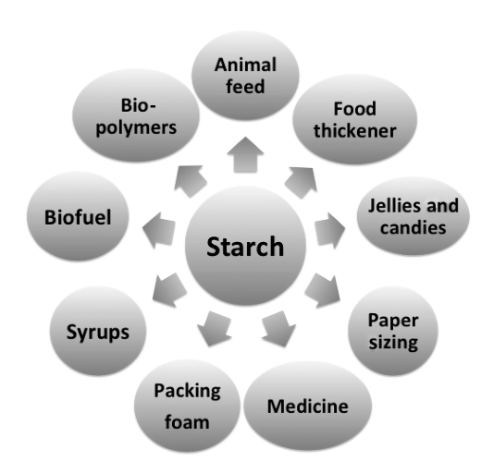More than ever, starch remains an irreplaceable pillar of our society. It is the main storage polysaccharide in foods of plant origin and the primary energy source in the human diet. Cereals (such as wheat, corn, rice and barley), tubers and roots (such as potatoes and cassava) are the sources of common food starches. Starch is an essential raw material for industrial applications. It is harvested and used as such or chemically or enzymatically processed into various products such as starch hydrolysates, glucose syrups, fructose, starch or maltodextrin derivatives, or cyclodextrins. Native starches can be modified chemically, physically, enzymatically, or by combining these processes to produce a material used in non-food industries such as paper, textiles, mining, building materials, consumer products, and biofuels.

As a global renewable resource, it is crucial to consider starch in the context of the world’s environmental challenges. It puts into perspective the different ways starch can be placed in an evolving sustainable circular bioeconomy for society, the environment and the economy. The bioeconomy asserts that producing renewable biological resources and converting these resources and waste streams into value-added products such as food, feed, bio-based products, and bioenergy will continue to make starch a marker in human evolution.